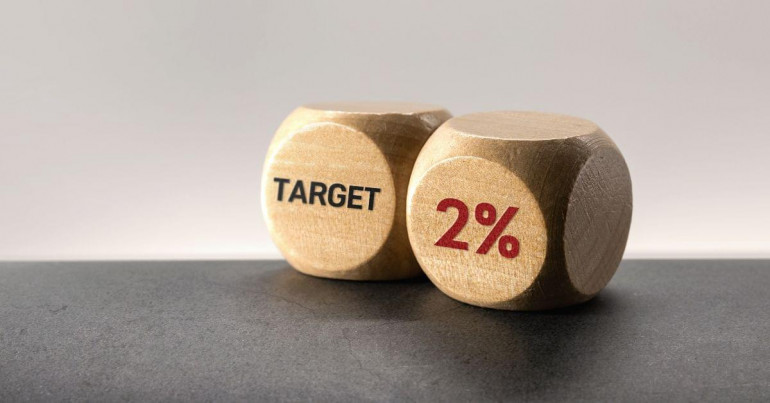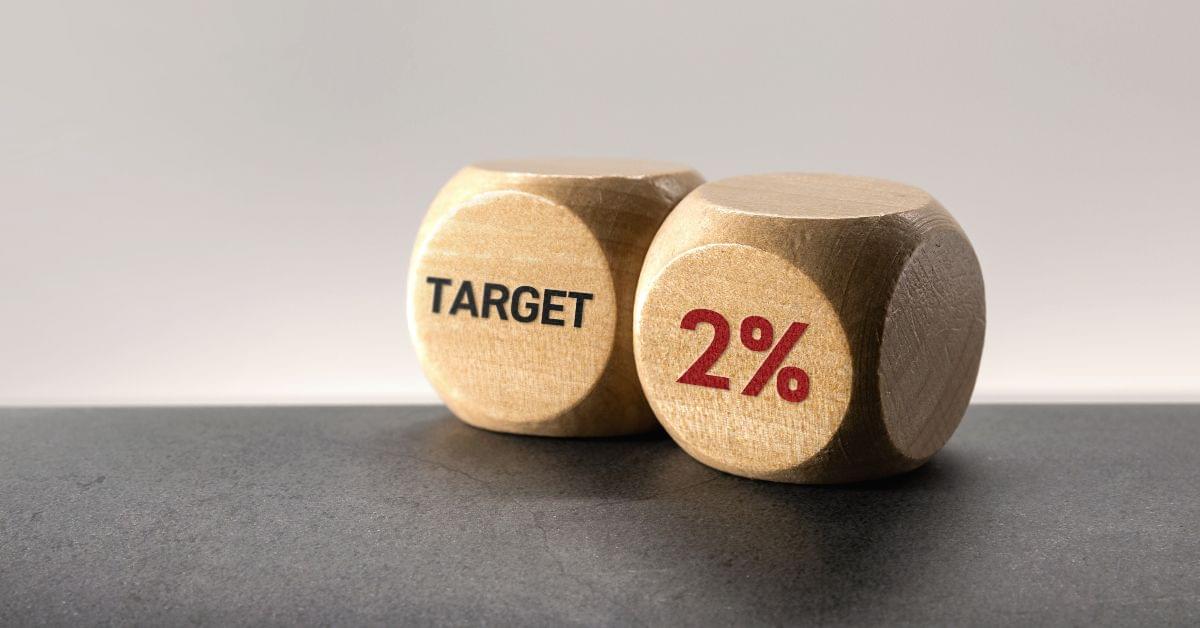
Do you know why inflation targets are so important for the health of our economy? In this article, we’ll explore why inflation targets are important, how they are set and why the current target of 2% makes the most sense for our current economic situation.

What is an inflation target?
An inflation target is a specific annual rate of inflation that a central bank aims to achieve for a country’s economy through its monetary policy. This target-based approach focuses on maintaining price stability, which is believed to be conducive to long-term economic growth.
Central banks typically set their inflation targets at around 2% to 3% per annum.
By setting a specific inflation rate as a goal, central banks can effectively manage monetary policy and respond to economic shocks, ensuring that the economy remains on a stable path.
Why is an inflation target important?
Inflation targeting involves forecasting the future path of inflation and comparing it with the target rate. If actual inflation deviates from the target, the central bank can take various measures, such as adjusting interest rates or implementing non-standard monetary policy measures, such as quantitative easing or quantitative tightening, to bring inflation back in line with the target.
In doing so, the central bank aims to maintain price stability, support economic growth and increase the transparency of monetary policy.
Benefits of inflation targeting
The benefits of inflation targeting include increased transparency and accountability of the central bank, allowing investors and the public to anticipate interest rate changes and lowering inflation expectations. However, critics argue that it can be inflexible, encourage speculative bubbles and may not always be the best target to promote economic stability.
Anchoring inflation expectations
Inflation targeting helps to anchor inflation expectations, which reduces investor uncertainty and encourages long-term planning. If people have confidence that the central bank will maintain a stable inflation rate, they are more likely to make decisions based on this expectation, which in turn helps to keep actual inflation rates close to the target.
Transparent policy framework
A framework for focusing on domestic issues and responding to shocks in the home economy is provided by an inflation goal for central banks. This flexibility allows them to respond to short-term fluctuations while maintaining their commitment to the medium-term inflation target, thus striking a balance between rules and discretion in monetary policy.
Long-term economic planning
Additionally, having an inflation target can help reduce the time-inconsistency problem, where policymakers may be tempted to pursue short-term gains at the expense of long-term stability. By committing to a specific inflation target, central banks are held accountable for achieving this goal, which can lead to more responsible and consistent monetary policy decisions.
Why is the inflation target set at 2%?
An inflation target of 2% is considered the sweet spot for maintaining a healthy economy. This rate is low enough to ensure consumer comfort while also being relaxed enough to allow the economy to flourish, according to the Federal Reserve’s doctrine established years ago.
The 2% target was introduced by the Fed in 2012
The 2% target has been in place since 2012 and is measured by the Personal Consumption Expenditures (PCE) Price Index.
The Federal Reserve aims for an inflation rate of 2% to stave off deflation during economic downturns. By maintaining a stable level of inflation, the central bank has more room to lower interest rates when it wants to stimulate the economy. In addition, consumers and companies are more likely to save, borrow, and invest wisely, which supports a healthy economy, when they can reasonably anticipate that inflation will stay low and steady.
Inflation targets around the world
Since the 1990s, when the Bank of New Zealand first adopted this approach, many central banks have followed suit, with the common inflation target being set at 2% to 3%.
The United States Federal Reserve, for instance, has had a 2% inflation target since January 2012. This target is key to the Fed’s vision for stable prices in the U.S. economy. From January 2013, the Bank of Japan has similarly set its inflation objective at 2%.
By adjusting its inflation objective to a symmetrical 2% in 2021, the European Central Bank (ECB) brought itself into line with other significant developed nations.
Other countries, such as Canada, Australia, and Israel, also include a 2% target in their inflation rate goals, according to the International Monetary Fund (IMF).

Inflation outlook for the rest of the year
Inflation has remained stubbornly high since the start of 2023 and shows little sign of easing any time soon, despite aggressive interest rate hikes.
The energy component of inflation, which drove the rise throughout 2022, has eased, but core inflation, which excludes volatile components such as energy and food prices, has actually risen, according to the Bank of England’s May 2023 monetary policy report.
This is because the services and shelter components of inflation have increased significantly. As a result, central banks around the world are reluctant to say that there will be a pause in interest rate hikes or that we have reached the end of this hiking cycle.
On the other hand, instability in the financial system, with a number of US regional banks being taken over by the FDIC in recent weeks, and uncertainty over the US debt ceiling negotiations have led the market to price in US rate cuts as early as September this year. These forces are dampening inflation expectations and as a result, inflation could also surprise to the downside later this year.
Follow our daily market updates or subscribe to our newsletter to receive the latest news straight to your mailbox.
G.C. Wagner
Gustav Christopher is a writer specialising in finance, tech, and sustainability. Over 15 years, he worked in banking, trading and as a FinTech entrepreneur. In addition, he enjoys playing chess, running, and tennis.



